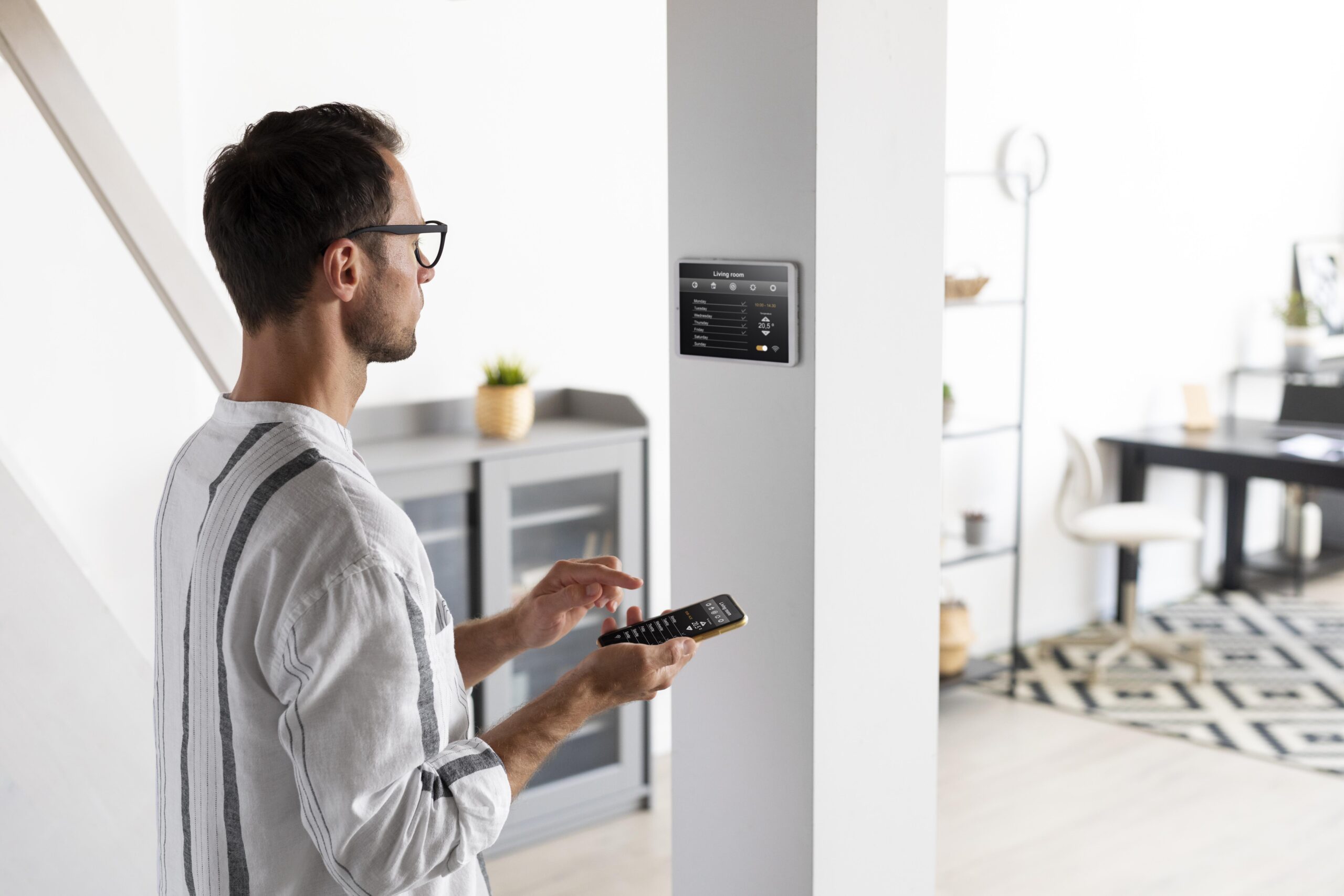In today’s digital age, ensuring the safety of your family starts with smart home security choices. When it comes to installing a surveillance system, effective camera placement is just as important as the technology itself. Modern security CCTVs often come with wide fields of view and flexible mounts — but proper initial positioning remains key for optimal performance.
You can start by identifying the most vulnerable areas of your home, like the front door, dimly lit spots, and obscured windows or entrances. Choose locations free from common obstructions like trees or potential lens flares in order to capture clear and reliable footage. In this blog we have listed specific areas of all homes that require careful monitoring for comprehensive security.
1. Front Door: Your First Line of Defense
The front door is one of the most vulnerable entry points for any home. According to the International Association of Certified Home Inspectors, 34% of burglars enter homes through the front door. Installing a camera here helps monitor visitors, package deliveries, and potential intruders. A video doorbell cam is an excellent option, providing clear footage and real-time notifications directly to your phone. This allows you to see who’s at your door, even when you’re not home.
2. Back Door and Side Doors: Cover All Entry Points
Secondary entrances, like back and side doors, are often targeted by intruders looking for less visible access points. Statistics show that 22% of break-ins occur through the back door. Placing cameras at these entry points ensures you have complete surveillance over every possible access route. Consider weatherproof cameras with motion detection for outdoor use, ensuring you capture any unusual activity.
3. First-Floor Windows: Protect Vulnerable Access Points
Windows, particularly those obscured from street view, are common targets for burglars. First-floor windows account for a significant number of break-ins, so installing CCTVs near these access points is essential. Position the camera to capture both the window and its surroundings, providing a clear view of any suspicious behavior. Motion-activated cams with night vision are ideal for monitoring these areas.
4. Garage and Driveway: Safeguard Valuable Assets
Garages often store valuable tools, vehicles, and equipment, making them prime targets for theft. Additionally, driveways are common areas for vehicle break-ins. A video camera focused on your garage and driveway helps monitor activity and deter unauthorized access. Motion-detection features work well here, sending instant alerts to your phone when movement is detected.
5. Stairways and Hallways: Monitor Indoor Traffic
Indoor cameras placed along stairways and main hallways capture movement throughout your home. These areas are critical for tracking an intruder’s path and ensuring household activity remains safe. Positioning a CCTV here provides clear evidence in case of a break-in and helps you keep an eye on family members’ comings and goings.
6. Common Living Areas: Oversee Shared Spaces
Living rooms, kitchens, and other common areas benefit from camera coverage as they are high-traffic zones. Monitoring these spaces allows you to ensure the safety of children, pets, and elderly family members. Indoor cameras with two-way audio can increase security by allowing communication with those at home when you’re away.
7. Backyard and Yard: Secure Outdoor Spaces
A backyard with hidden spots can be an easy target for intruders. Outdoor cameras with night vision and motion detection cover your yard, sheds, and fences, offering effective surveillance. Strategically place cameras to cover large areas and minimize blind spots.
8. Basement Entrance: Cover Lesser-Used Entryways
Basements often have exterior doors or windows that burglars may target. A well-placed camera ensures these low-traffic areas remain secure. Motion-activated cameras with night vision work well here, providing alerts if any unusual activity occurs.
Other Important Factors to Consider
When installing home security video surveillance, focus on key factors for optimal performance. First, decide whether to keep CCTVs visible or hidden as some burglars avoid visible cameras, while others see them as signs of valuable possessions. Next, ensure outdoor cameras are weatherproof by checking their temperature range and IP rating. To avoid poor footage quality, place cameras away from strong reflections and glare, and choose HDR-equipped models for outdoor use.
Be mindful of your Wi-Fi capacity, as multiple cameras can slow down your network— a separate router can help. Lastly, prioritize cameras near valuable items like electronics, cash, and jewelry, which are common burglary targets.
Common Camera Placement Mistakes to Avoid
When installing security cameras for home, avoid common placing mistakes to ensure optimal performance. Proper CCTV positioning maximizes security and keeps your system running smoothly.
- Choose the right height: Mount cameras high enough to prevent tampering but low enough to clearly capture faces and movements.
- Avoid obstructions: Ensure the camera’s view isn’t blocked by trees, signs, or other objects.
- Consider lighting conditions: Avoid strong backlighting or low-light areas, as they can distort footage. Opt for well-lit spaces without direct sun glare.
- Ensure a strong Wi-Fi signal: For real-time monitoring, install cameras within the Wi-Fi range and change your network password to prevent unauthorized access.
Where You Should Never Install a Security Camera
When installing surveillance cameras, always respect your neighbors’ privacy. It’s usually fine to capture public-facing areas, but avoid pointing cameras directly at private spaces like their windows or yards. Inside your home, never place cameras in private areas like bedrooms and bathrooms. These spaces deserve privacy, and connected cameras can be vulnerable to hacking.
If you want to monitor kids or elderly family members, use safer alternatives.
- Baby monitors work well for young children’s rooms.
- Motion detectors and glass break sensors protect doors and windows.
- Personal medical alert systems help seniors stay safe without invading their privacy.
- Secure your camera system with strong passwords and encryption to prevent unauthorized access.
Conclusion
Choosing the best places to install security cameras at home enhances safety and ensures comprehensive coverage. If you don’t position your CCTV security equipment in the most optimal position, then this may render them useless. By positioning cameras strategically, you protect your family and belongings, deter potential intruders and ensure peace of mind.
Check local ordinances. Interestingly, laws regarding surveillance cameras vary from state to state, and only 15 states have relevant legislation. Remember to balance security with privacy, and regularly maintain your system for optimal performance.





